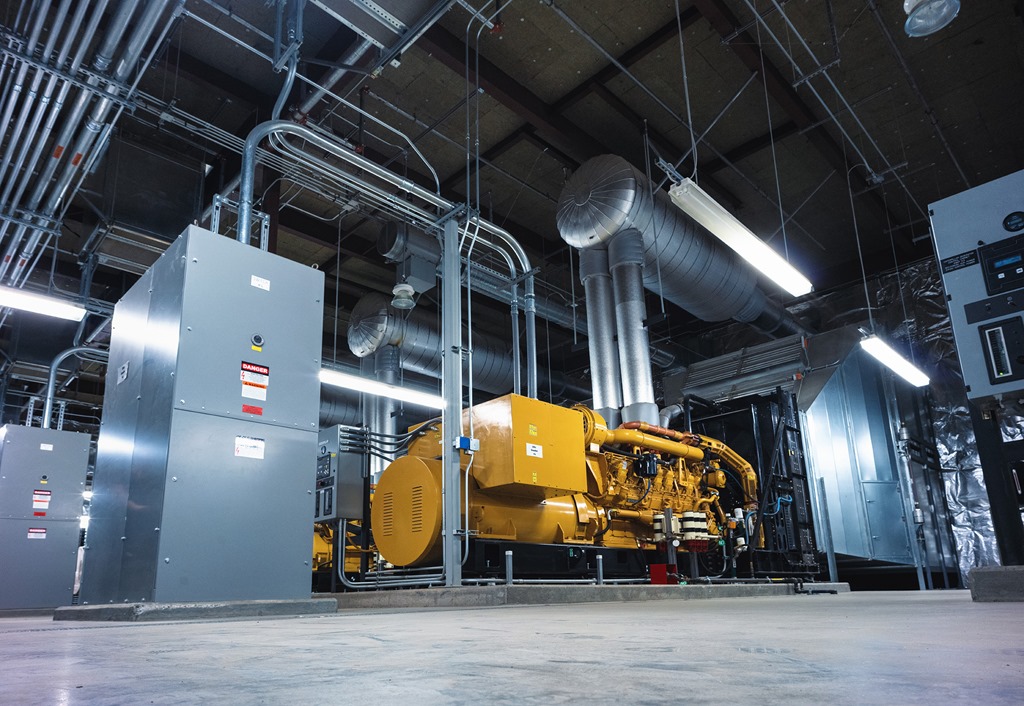18
Oct
https://azure.microsoft.com/blog/empower-an-adaptive-it-environment-for-people-processes-and-culture-with-inside-azure-for-it/In July, we announced Inside Azure for IT, an online technical skilling resource designed for cloud professionals to transform their IT operations with Azure best practices and insights. The team here has been so inspired by how many of youRead More
14
Oct
https://azure.microsoft.com/blog/humana-leverages-microsoft-cloud-for-healthcare-to-develop-advanced-predictive-models/This blog post has been co-authored by Slawek Kierner, SVP of Enterprise Data & Analytics, Humana and Tie-Yan Liu, Assistant Managing Director, Microsoft Research China. Using AI models to make real-world impact Trips to the hospital happen. And while everyone inRead More
01
Jun

Today, Azure announces the general availability of Azure ND A100 v4 Cloud GPU instances—powered by NVIDIA A100 Tensor Core GPUs—achieving leadership-class supercomputing scalability in a public cloud. For demanding customers chasing the next frontier of AI and high-performance computing (HPC), scalability is the key to unlocking improved Total Cost of Solution and Time-to-Solution.
Simply put, ND A100 v4—powered by NVIDIA A100 GPUs—is designed to let our most demanding customers scale up and scale out without slowing down.
Benchmarking with 164 ND A100 v4 virtual machines on a pre-release public supercomputing cluster yielded a High-Performance Linpack (HPL) result of 16.59 petaflops. This HPL result, delivered on public cloud infrastructure, would fall within the Top 20 of the November 2020 Top 500 list of the fastest supercomputers in the world, or top 10 in Europe, based on the region where the job was run.
Measured via HPL-AI, an artificial intelligence (AI) and machine learning (ML)-focused High-Performance Linpack variant, the same 164-VM pool achieved a 142.8 Petaflop result, placing it among the world’s Top 5 fastest known AI supercomputers as measured by the official HPL-AI benchmark list. These HPL results, utilizing only a fraction of a single public Azure cluster, rank with the most powerful dedicated, on-premises supercomputing
01
Jun

Whether you’re a new student, a thriving startup, or the largest enterprise, you have financial constraints, and you need to know what you’re spending, where, and how to plan for the future. Nobody wants a surprise when it comes to the bill, and this is where Azure Cost Management and Billing comes in.
We’re always looking for ways to learn more about your challenges and how Azure Cost Management and Billing can help you better understand where you’re accruing costs in the cloud, identify and prevent bad spending patterns, and optimize costs to empower you to do more with less. Here are a few of the latest improvements and updates based on your feedback:
Expanded support for cost allocation across APIs and downloads. Management group exports in Azure Government. Reminder: Cloudyn retiring on June 30. Selecting relative dates in the cost analysis preview. Help improve usability for Azure reservation and savings features. What’s new in Cost Management Labs. New ways to save money with Azure. New videos and learning opportunities. Documentation updates.
Let’s dig into the details.
Expanded support for cost allocation across APIs and downloads
From
31
May

In July 2020, we announced our goal to eliminate our dependence on diesel fuel for backup power in our datacenters by 2030. This is in addition to our commitment to having a 100 percent supply of renewable energy procured for our datacenter operations by 2025. Reliable backup power is essential to our customer promise—delivering highly available, reliable, and scalable cloud services. Many critical industries, governments, and institutions depend on the Microsoft cloud to support essential operations, even when events such as extreme weather interrupt the primary energy supply.
Generators at datacenters, most often powered by petroleum-based diesel, play a key role in delivering reliable backup power. Each of these generators is used for no more than a few hours a year or less at our datacenter sites, most often for routine maintenance or for backup power during a grid outage. Diesel fuel accounts for less than 1 percent of Microsoft’s overall emissions, but finding solutions to reduce reliance on traditional diesel fuels represents a substantial contribution to the technology pathways necessary for deep decarbonization. The most immediate opportunity to reduce the use of traditional diesel fuels is to validate and implement alternative, lower-carbon fuel sources for our generators.
26
May

A little over a year ago, Microsoft Build 2020 was Microsoft’s first flagship event to become all-digital early in the COVID-19 pandemic. We wanted to ensure we were there to support developers, who had become more critical than ever to business and societal continuity during the pandemic. During these most challenging times, developers have enabled businesses large and small to continue growing, transforming, and even reimagining the way they fulfill their purpose of supporting their customers and employees.
Microsoft Azure’s mission is to help people and organizations invent with purpose. We are proud to support developers—in many ways, the digital-first responders and pioneers of our generation—and the broader organizations they drive with their innovation. At digital Microsoft Build 2021 this week, we announced a host of new capabilities that help developers create intelligent, connected, and secure cloud-native apps that harness the power of data and AI and run anywhere. Below are the key stories we landed this week at Microsoft Build, with ways to explore for more details.
Increase developer velocity with Microsoft’s end-to-end developer platform
As a company built by developers and for developers, our goal at Microsoft is to provide them with the agility to address the real-world needs of
26
May

Cloud and edge computing are coming together as never before, leading to huge opportunities for developers and organizations around the world. Digital twins, mixed reality, and autonomous systems are at the core of a massive wave of innovation from which our customers already benefit.
From the outside, it’s not always apparent how this technology converges or the benefits that can be harnessed by bringing these capabilities together. This is why at Microsoft Build we talk about the possibilities this convergence creates, how customers are already benefitting, and our journey to making this technology easier to use and within reach of every developer and organization.
The possibilities of connected environments
Imagine taking any complex environment and applying the power of technology to create awe-inspiring experiences and reach new business heights that were previously unimaginable. The possibilities are endless: A retail store where the shopping experience is optimized in real-time and shelves are always stocked. A supply chain that tracks and reduces carbon emissions. A process manufacturing line that adjusts for variations in natural ingredients and automatically detects and compensates for operational bottlenecks. A city plan that simulates various growth proposals to ensure they’re making the best use of energy sources.
26
May

Successful digital transformation requires eliminating unnecessary barriers. To that end, we announced Azure Synapse Analytics in November 2019, where we removed the barriers between data warehousing and big data analytics. And in 2020, we took this a step further and announced Azure Synapse Link for Azure Cosmos DB to break down the barriers that had long existed between operational data and analytical systems.
Over the past two years, customer feedback has made it clear that when data barriers are dissolved the impact of analytics grows exponentially. Today, we’re announcing the next step in bringing data insights to all by eliminating the barrier between business applications and analytical systems with Azure Synapse Link for Microsoft Dataverse.
Introducing Azure Synapse Link for Dataverse
The barrier between business applications data and analytical systems is a critical factor that impedes accelerated time-to-insight. As developers use platforms such as Microsoft Power Apps, Microsoft Power Automate, and Microsoft Dynamics 365 to create and manage business applications, the data that comes from these applications is massive. Today, customers store and manage this data in Dataverse—a common store for all Microsoft business applications. However, when customers want to discover deep insights from the data within Dataverse it
26
May

Customers around the world take advantage of Microsoft Azure to build, deploy, and manage business-critical applications at scale. We continuously innovate to help customers simplify their app deployment and management experience so they can spend more time building great solutions. Today, we are announcing several additional Azure infrastructure capabilities to help achieve this goal.
Simplify your declarative deployment experience in Azure with Bicep
With developers depending heavily on cloud infrastructure to run the apps they create, we continuously strive to simplify the infrastructure setup experience so they can stay focused on the actual innovation and experiences they are crafting within their apps. Azure Resource Manager (ARM) templates are extremely powerful; however, they can be complex. Bicep, an open-source, domain-specific language (DSL), further simplifies developers’ declarative deployment experience in Azure. Bicep makes it much easier to both read and write infrastructure-as-code in Azure.
Bicep allows customers to deploy Azure resources with many of the conveniences of modern programming languages—now indispensable to any app developer’s workflow. It supports first-class tooling with Visual Studio Code integration and has features such as type safety, modularity, and concise, readable syntax. Bicep is a transparent abstraction over ARM templates, which means everything you can do in
26
May

“Tech companies born with an open-source mentality get it. It’s our ability to work together that makes our dreams believable, and ultimately achievable; we must learn to build on the ideas of others”—Satya Nadella, CEO, Microsoft
Microsoft has always been a developer-first organization, and we are striving to make our tools and platforms better to serve developers. In that spirit, Azure is designed to give developers control over their infrastructure and provide the greatest flexibility regardless of operating system, database, language, deployment tool, or methodology, and to extend those options on-premises and to the edge. Today, many of those systems are open source: Linux, Kubernetes, Spark, and Python—just some of the best-known examples. And so Azure has been built to run those technologies, either at the infrastructure as a service (IaaS) or platform as a service (PaaS) levels, through Linux running in virtual machines (VMs), or our Azure Kubernetes Service (AKS) for cloud-native development, often in tandem with one of our managed services for popular open-source databases.
We are committed to open source at Microsoft. We contribute to Linux, Kubernetes, Visual Studio Code, and serving in open-source organizations like the Cloud Native Computing Foundation (CNCF) or Open Source Security Foundation (OpenSSF). At